Welcome to the world of the vibrant Peacock Eel! It’s part of the spiny eel family, often referred to as a Siamese spiny eel. This species, scientifically named Macrognathus sianensis, exhibits an eel-like appearance. However, it’s considerably smaller than most of its relatives.
Physical Characteristics of the Peacock Eel
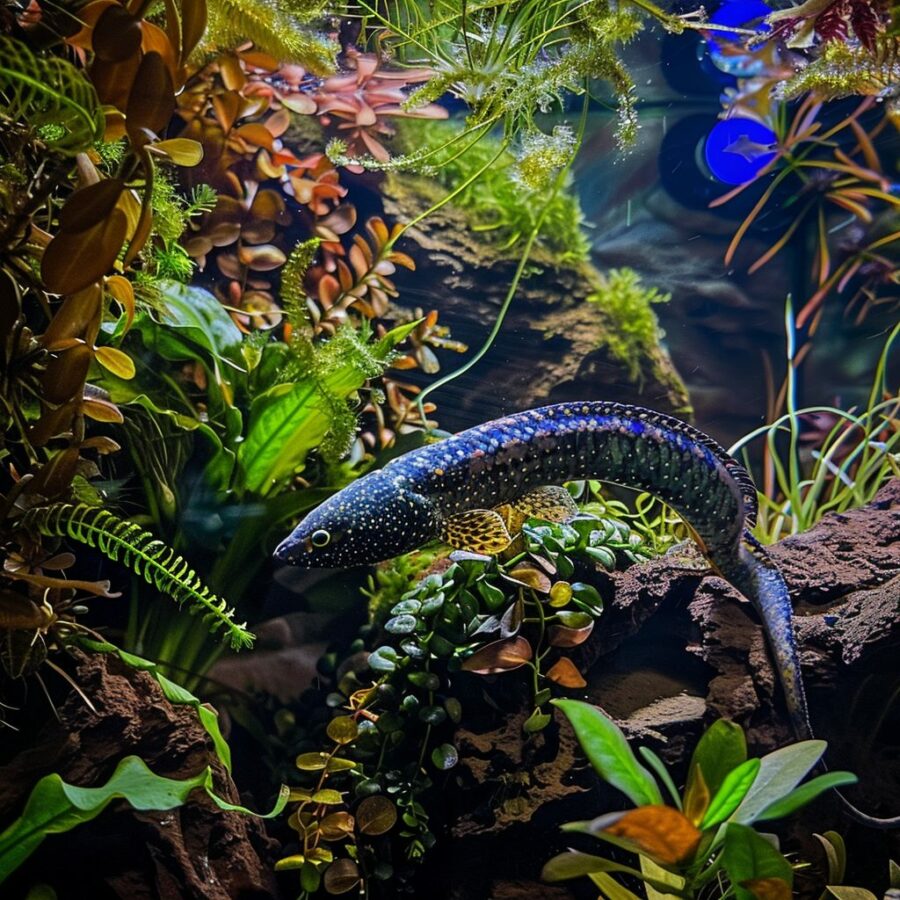
The color palette of Peacock Eels is intriguing. Their bellies are light, their sides are light brown, while their backs flaunt a darker shade of brown. Add a narrow yellow line extending from the snout to the caudal fin, and you’ve got a truly good-looking fish.
More distinctive features include five eye spots on both dorsal and caudal fins, contributing to the eel’s unique look.
Peacock Eel’s Natural Habitat, Lifestyle And Diet
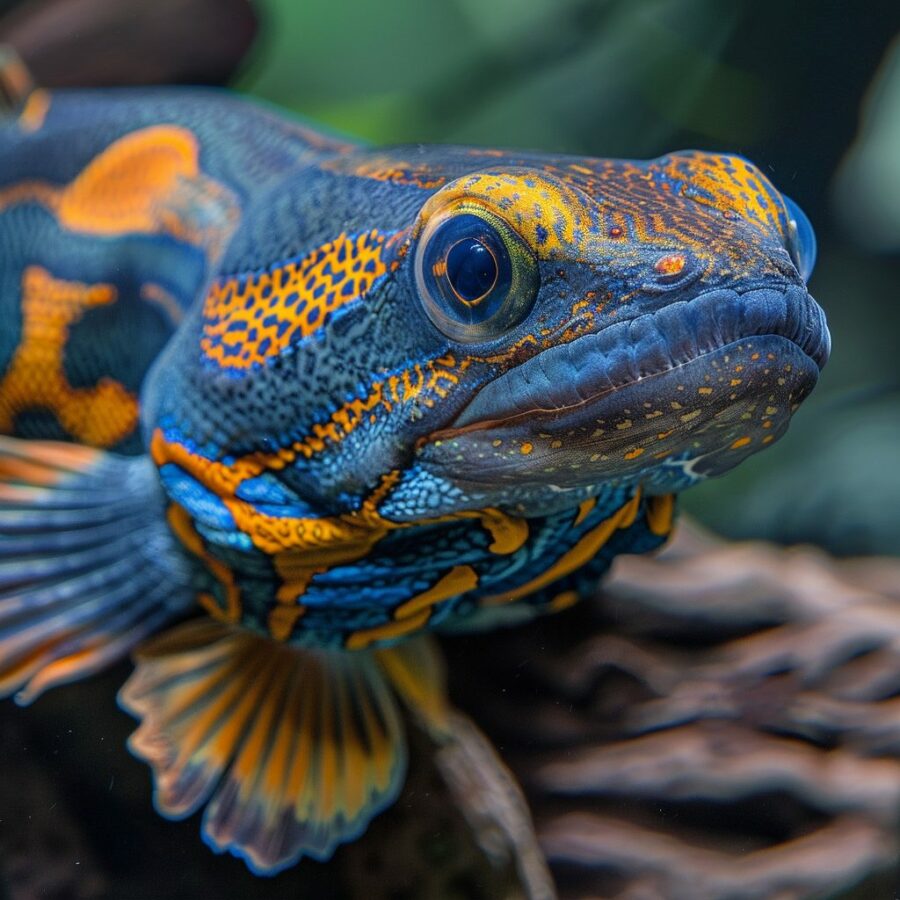
Origin and Habitat
Native to regions like India, Thailand, Malaysia, Sri Lanka, and Sumatra, they prefer slow-moving rivers with plenty of vegetation. The Peacock Eels are primarily nocturnal and venture out at night in search of food. They bury themselves in riverbed sand and gravel for the rest of the time, with only their heads peeking out.
Diet
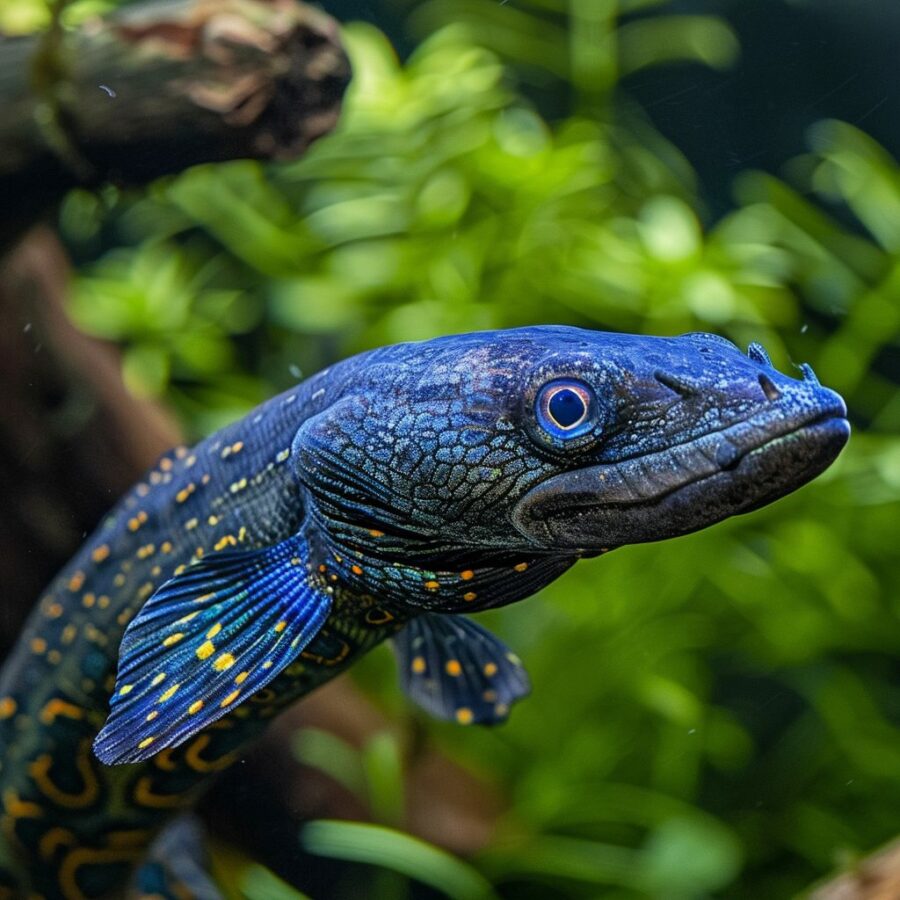
The diet of these beings can be a delightful assortment of:
- Crustaceans
- Worms
- Larvae
If you house one in your aquarium, these eels prefer live food like blood worms, earthworms, cyclops, brine shrimp, and mosquito larvae. Feeding them frozen food isn’t advisable as many Peacock Eels prefer their meal writhing and live!
Caring for a Peacock Eel in an Aquarium
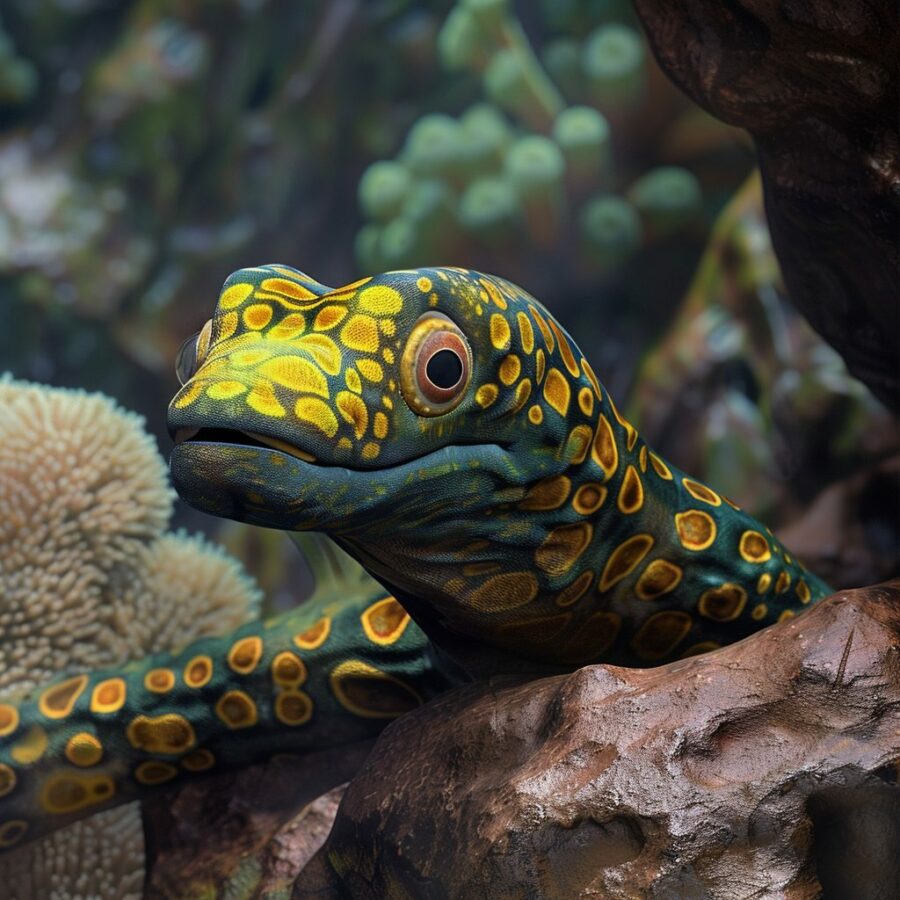
If you’re considering keeping a Peacock Eel as a pet, you must arrange for suitable living conditions. For an eel of about six inches, you’ll need a tank twice as long, with a water capacity of twenty gallons.
Remember, these eels have a knack for escape – so ensure your tank has a secure cover!
Also, the water temperature must be consistent, ideally between 73 and 82 degrees. Simulate the eel’s natural environment to the maximum extent by:
- Adding some salt to the water
- Maintaining a pH of 7.0
- Maintaining a dH of 10
- Featuring dense vegetation
- Providing plenty of hiding spaces like rocks, wood, or PVC pipes
Community Behavior
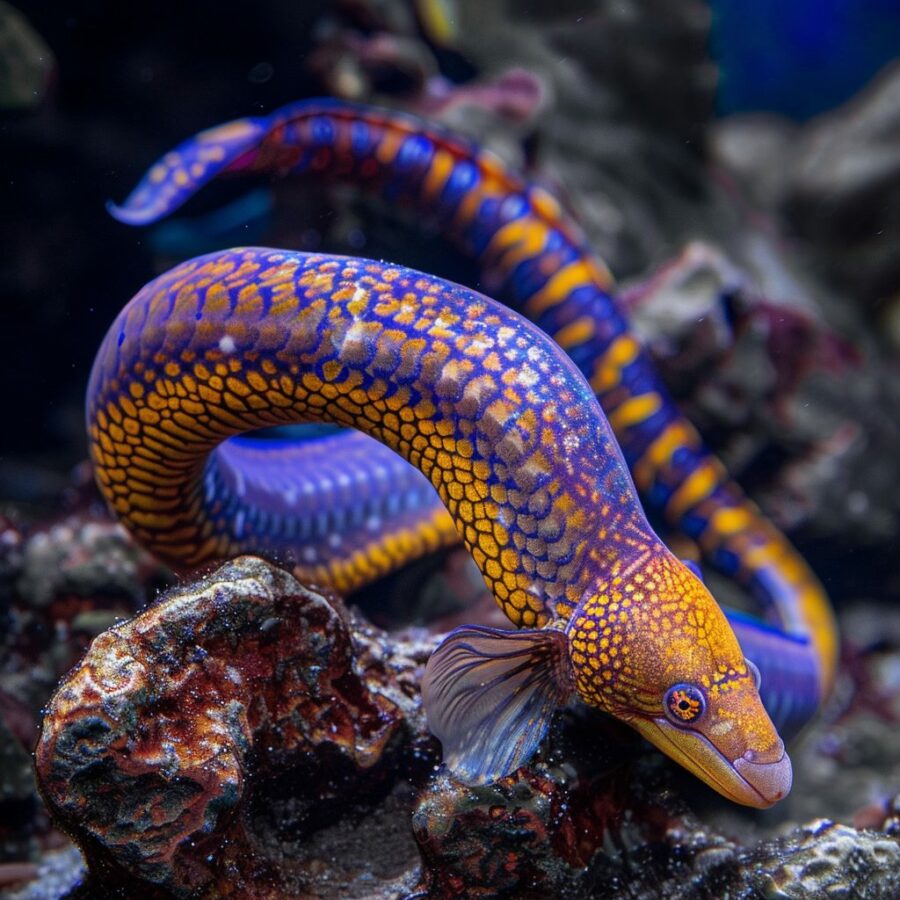
Peacock Eels are peaceful creatures. They’re well-suited for community tanks and pretty much disregard other fish. They may even cohabitate peacefully with their own kind.
Breeding Peacock Eels
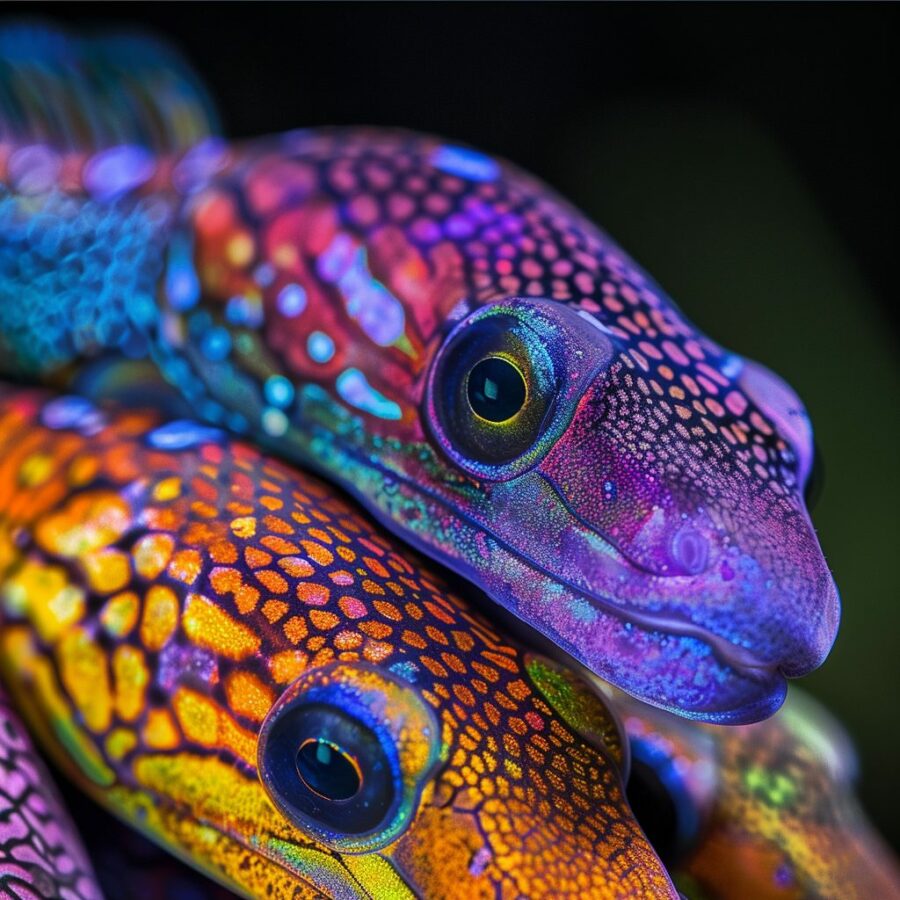
Discerning males from females in the world of Peacock Eels is virtually impossible. Moreover, this species has never successfully reproduced in captivity. If you’re keen on breeding them, your best bet would be to place several eels in a large tank and supply high-quality food and clean water. The precise conditions for breeding stimulation remain a mystery.
Related Resources: